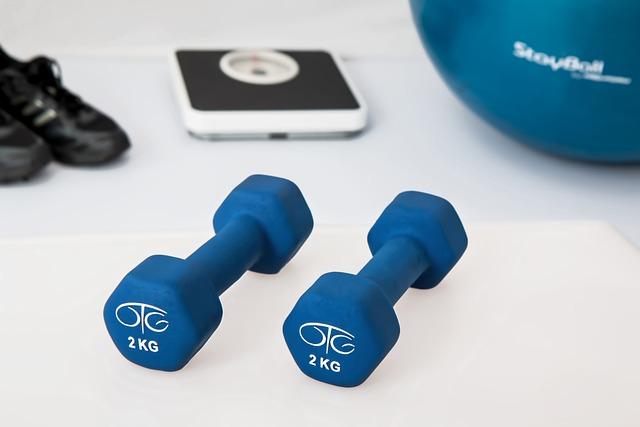In today’s health-conscious society, maintaining an optimal weight is not just a matter of aesthetics but a crucial component of overall well-being. Navigating the myriad of information and strategies available can be overwhelming, making it essential to utilize tools that simplify the process. have emerged as indispensable resources for individuals seeking to achieve their fitness goals with precision and efficiency. These calculators offer personalized insights by estimating caloric needs, tracking progress, and setting achievable targets based on unique physiological parameters. In this article, we will delve into the functionality and benefits of free weight loss calculators, providing you with the knowledge needed to harness their potential and embark on a successful weight management journey.
Understanding the Science Behind Weight Loss Calculators
Weight loss calculators are invaluable tools for anyone embarking on a journey to shed pounds. These calculators are grounded in scientific principles, primarily focusing on the balance of calories consumed versus calories burned. Energy balance, a fundamental concept, is at the core of weight loss. To achieve a caloric deficit—burning more calories than consumed—one must understand their Basal Metabolic Rate (BMR) and Total Daily Energy Expenditure (TDEE). These calculators typically take into account several factors, including:
- Age: Metabolic rates can decrease with age, affecting calorie needs.
- Gender: Men generally have a higher BMR than women.
- Weight and Height: These metrics are crucial for calculating BMR.
- Activity Level: Determines the multiplier for calculating TDEE from BMR.
By integrating these variables, weight loss calculators provide personalized insights into daily caloric needs. The science behind these tools is rooted in physiology and metabolism, offering users a tailored approach to manage their weight effectively. Understanding how these elements interact can empower individuals to make informed decisions about their dietary and exercise routines.

Choosing the Right Weight Loss Calculator for Your Needs
When it comes to selecting a tool to guide your weight loss journey, it’s crucial to find one that aligns with your specific goals and lifestyle. Weight loss calculators vary in their functionalities, so it’s essential to understand what each offers. Here are some key features to consider:
- Customization Options: Look for calculators that allow you to input personalized data such as age, gender, activity level, and weight goals. This ensures more accurate and tailored results.
- Comprehensive Metrics: The best calculators offer more than just calorie counting. Seek tools that track macronutrient intake, hydration levels, and exercise metrics to give a holistic view of your progress.
- User Interface: Choose a calculator with an intuitive and easy-to-navigate design. A user-friendly interface can make tracking your progress more enjoyable and less of a chore.
- Integration Capabilities: If you use fitness apps or wearable devices, ensure the calculator can sync with these tools for seamless data sharing and tracking.
By focusing on these aspects, you can select a weight loss calculator that not only meets your immediate needs but also supports your long-term health objectives effectively. Remember, the right tool should empower you to take control of your health journey confidently.

Maximizing Results with Accurate Data Input
To harness the full potential of free weight loss calculators, it’s essential to input precise and comprehensive data. By doing so, you ensure that the calculations are tailored to your unique body composition and lifestyle. Start by gathering accurate information about your current weight, height, and age. Remember, even small discrepancies can lead to significant variations in results.
- Track your daily activity level: This includes your routine physical activities, whether it’s a sedentary desk job or a more physically demanding occupation.
- Monitor your dietary intake: Provide honest data about your daily caloric and nutrient consumption to help the calculator give you more personalized advice.
- Consider your metabolic rate: Understanding whether you have a fast or slow metabolism can aid in adjusting the calculator’s outputs to suit your needs.
Utilizing accurate data allows these calculators to deliver more reliable insights, helping you craft a more effective and achievable weight loss plan. Precision in data entry isn’t just about numbers; it’s about setting the right foundation for your journey to a healthier you.

Common Mistakes to Avoid When Using Weight Loss Calculators
When utilizing these tools, it’s crucial to steer clear of some common pitfalls to ensure you get the most accurate and beneficial results. First, avoid underestimating your daily caloric intake. Many users forget to account for snacks, beverages, and small bites throughout the day, which can add up significantly. Second, be wary of overestimating your activity level. It’s easy to think you’re more active than you actually are, especially if your exercise routine isn’t consistent.
- Not Updating Regularly: Weight loss calculators require updated information to remain accurate. Ensure you input new weight and activity levels regularly.
- Ignoring Nutritional Balance: Focusing solely on calorie numbers without considering the nutritional quality of the food can lead to unhealthy eating habits.
- Setting Unrealistic Goals: While it’s tempting to aim for rapid weight loss, setting goals that are too aggressive can be discouraging and unsustainable.
- Over-reliance on Calculators: Remember, these tools are guides, not absolute solutions. Listen to your body and consult with professionals if necessary.
